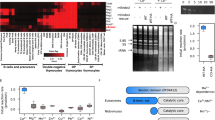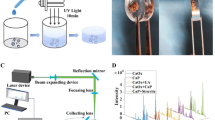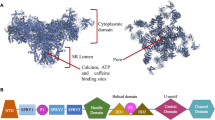Abstract
MEASUREMENTS of calcium absorption require the administration of a suitable marker for natural calcium; the most commonly used markers in adults are 45Ca and 47Ca, two radioactive nuclides of calcium which cannot be used experimentally in infants because of the possible risk from radiation. Calcium salts enriched in the non-radioactive nuclides 46Ca and 48Ca are now available and may be used in newborn infants. Non-radioactive nuclides have the advantages that metabolic information can be obtained without exposure of the subject to ionizing radiation and that, if necessary, measurements can be made after prolonged storage of specimens because the marker is not subject to radioactive decay. The absorption, retention and elimination of calcium by the new-born infant are of practical importance1 and here we provide measurements from which true absorption and endogenous faecal elimination can, for the first time, be inferred.
Similar content being viewed by others
Article PDF
References
Widdowson, E. M., and McCance, R. A., Pediatric Clinics of North America, 12, 595 (1965).
Barltrop, D., and Oppe, T. E., Lancet, ii, 1333 (1970).
Barltrop, D., and Sutton, A., Symposium on Nuclear Activation Techniques in the Life Sciences, IAEA 479 (1972).
Carr, T. E. F., Harrison, G. E., and Sutton, A., Proc. Soc. Exp. Biol., NY, 110, 151 (1962).
Aubert, J. P., Bronner, F., and Richelle, L. J., J. Clin. Invest., 42, 885 (1963).
Harrison, G. E., Sutton, A., Shepherd, H., and Widdowson, E. M., Brit. J. Nutr., 19, 111 (1965).
Author information
Authors and Affiliations
Rights and permissions
About this article
Cite this article
SUTTON, A., BARLTROP, D. Absorption, Accretion and Endogenous Faecal Excretion of Calcium by the Newborn Infant. Nature 242, 265 (1973). https://doi.org/10.1038/242265a0
Received:
Issue date:
DOI: https://doi.org/10.1038/242265a0



